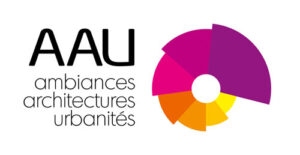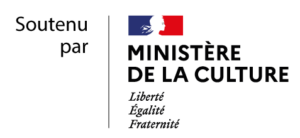
Location
Cairo, Egypt
Linear parks and urban ambiances: Emerging concept to enhance the quality of life in informal settlements
Agricultural lands are replaced over time with the gradual encroachments of buildings and streets, thus they gradually lose their functions, identity and the opportunities to utilize these unique peri-urban spaces and interfaces. The result is a particular model of urbanization based on agriculture land sub-divisions created by the spontaneous dynamics of construction. This phenomenon of the expansion over agricultural lands is, as P. Panerai noted in 1997: “far from being marginal, but on the contrary, the majority was for the provision of housing”. The result is a very dense urban fabric where the coefficient of the built up area is very high. The inhabitants of these new residential districts suffer from a real lack of space and vegetation despite the availability of agricultural land and the proximity to the Nile.The seminar on “Linear Parks and Urban Ambiances” attempts to discuss the “linear parks concept” as a new approach that addresses the increasing problem of informal settlements along the water canals. The concept has been applied in similar urban contexts in several countries such as in Sao Paolo, Brazil and Bogota, Columbia and had positive results. The seminar aims at introducing this concept in the urban context of Cairo while discussing the possibility of applying such approach on water canals (rivers, irrigation and drainage canals and their branches) that are considered important elements of the city’s urban fabric in an attempt to help overcome the increasing problem of informal settlements.
The linear park concept is considered here as an applied field for approaching “urban ambiances”. Space ambiances is based on studying the sensory configuration of the urban context through adopting three dimensions: (1) the spatial dimension (urban form and landscape), (2) the sensory dimension, which includes how to recognize urban spaces by different senses (audio, visual, olfactory and tactile) and also body movement in the space, and (3) the social dimension, which examines the impact of urban spaces on social behavior and induces certain relationships among space users.
In this optics, the seminar is interested in the role of water as a creator of an ambiance. Water is not limited to being a visual component, but it is a « former » that produces a specific ambiance. It configures a particular landscape both by its physical qualities: fluidity, humidity, sound, reflection, etc.; and by the life it brings. That is, transforming the banks of the waterways into linear urban spaces of combined green and blue landscape elements along the ‘legacy’ waterways will, at first, revive the water identity and highlight the importance of the water element in the urban environment and its ability to create new urban atmosphere. Secondly, it will help improve the quality of life in the surrounding context through the creation of public spaces, especially in informal areas that mostly suffer from high density and lack of urban spaces.
Scientific context
A scientific Franco-Egyptian collaboration was initiated in January 2014 between Ain Shams University, Faculty of Engineering, Department of Urban Planning and Urban Design (DUPUD) and Grenoble School of Architecture (ENSAG), Cresson Laboratory (Research Center on Sonic Space & Urban Environment, UMR CNRS 1563 Ambiances, Architectures, Urbanités) in France, as a part of the “Imhotep program”. The latter is funded by Campus France and the Egyptian Academy of Scientific Research and Technology.
Seminar Organizers
- Amr Attia
- Jean-Paul Thibaud
- Noha G. Said
Organizing Committee
- Omar El-Hosseiny
- Mohamed Abdel Baki
- Jean-Paul Thibaud
- Amr Attia
- Noha G. Said
- Doaa K. Hassan
- Samy Afifi
- Ahmed S. Abdel Rahman
- Eman Abou Ziyan
- Nesma El-Refaie
- Gehad Mogahed
Scientific Committee
- Amr Attia
- Jean-Paul Thibaud
- Pascal Amphoux
- Mostafa Refaat
- Jacques Lolive
- Cintia Okamura
- Marwa Khalifa
- Abeer El-Shater
- Doaa K. Hassan
- Julien Delas
- Noha G. Said
- Samy Afifi
- Pascaline Thiolliere
- Dalia A. Gaafar

Monday 14 December – Linear parks around the world: ambiances and social practices
- Dr. Ayman Ashour, Dean of the Faculty of Engineering, Ain shams University.
- Dr. Omar El Hosseiny, Director of New Programs, Faculty of Engineering, Ain Shams University.
- Dr. Emad Hegazi, Vice Dean for Post-graduate Studies and Research, Faculty of Engineering, Ain shams University
- Dr. Mohamed Abdel Baki, Head of the Department of Urban Planning and Urban Design.
- 9:30 – 9:35 AM: Introduction by Amr Attia
- 9:35 – 9:40 AM: Introduction by Jean-Paul Thibaud
- 9:40 – 9:45 AM: Introduction by Noha Said
- 9:45 – 10:10 AM: Linear Parks in Sao Paulo by Cintia Okamura
- 10:15 – 10:40 AM: Bogota: example of the recuperation of public space by Pascaline Thillioère
- 10:40 – 11:10 PM: Open Discussion
Coffee break
- 11: 30 – 11:55 AM: A bottom-up political strategy related to wated canals (NGO, Fayoum Governarate: Irrigation Advisory Services, Central Directorate) By Dr. Ali El Bahrawy, Agric. Eng. Sameh M. Mohammed, Agric. Eng. Mohammed H. Hareedy, Agric. Eng. Mohammed H. Abu Zeid
- 11:55 – 12:20 PM: Building a sustainable future: linear parks as an opportunity for the regeneration of informal areas in Egypt (Amr Attia & Noha Said)
- 12:30 – 1:00 PM: Open Discussion
Lunch Break
Session 2 – 2:00 – 5:00 PM
- Photography exposition opening
- Introducing 4 case Studies form different perspectives:
First Axe: Human Behavior ( Dr. Abeer El Shater), Dahab Island and Street Omar AL-MokhtarSecond Axe: Body Presence in Space (Dr. Noha Said & Dr. Doaa Hassan), Maryouttia CanalDiscussion around the expositionThird axe: Urban Renwel (Dr. Marwa Khalifa), Maspero Triangle DistrictDiscussion
Tuesday 15 December 2015 – Linear Parks and the Changing Urban Politics
- 9h00 – 9h15: Introduction
- 9:15 – 9:40 AM: Linear Parks: a theoretical and pragmatic tool for urban projects by Pascal Amphoux
- 9: 45 – 10:10 AM: Ambiances and linear parks: a working group by Cintia Okamura
- 10: 15 – 10:40 AM: Feedback on the PROSAMIM of Manaus project by Jacques Lolive
- 10: 45 – 11: 15: Open discussion
Coffee break
- 11: 30 – 11: 55 PM: The River Nile in an environmental vision
- 12: 00 – 12:25 PM: NGO “Ressala Nour ala Nour” Sakaraa road case study by Mr.Hatem Farrag and Eng. Yasser Elesawy
- 12:30 – 1:00 PM: Open discussion
Lunch break
Session 4 – 2:00 – 5:00 PM
- Discussion with the different participants and with Municipalities, UN Habitat, Ministry of Informal Settlements Development Facility, Ministry of Water Resources and Irrigation, NGO’s, etc.
List of invited persons
- Agric. Eng. Mohammed H. Abu Zeid
Irrigation Advisory Services, Central Directorate
- Mr. Hemaida M. Aly
Head of Water Users Asssociation, Sanhour
- Mrs. Karine Bennafla
Présidente du CEDEJ (Centre d’Études et de Documentation Économiques, Juridiques et sociale)
- Mrs. Nathalie Chaplain
Professor Université Française en Egypte, Département d’architecture et d’urbanisme
- Prof. Dr. Ali El Bahrawy
Professor in Department of Irrigation, Ain Shams University
- Dr. Sherif El Gohary
Manager TA & CB Unit, Informal Settlement Development Facility
- Arch. Adel El Guindy
Tourism Development Authority
- Mr Serag El Din Saad
Chairman of TDA (Tourism Development Authority)
- Agric. Eng. Mohammed H. Hareedy
Irrigation Advisory Services, Central Directorate
- Eng. Ahmed M. Hassan
Nile Development and Protection Sector
- Mr. Antoine Hatzenberger
Attaché de coopération Universitaire, Ambassade de France en République Arabe d’Égypte, Service de coopération et d’action culturelle ; Institut Français d’Égypte
- Agric. Eng. Sameh M. Mohammed
Irrigation Advisory Services, Central Directorate
- Mr. Louis Moreau
Attaché Scientifique pour la science et la technologie, Ambassade de France en République Arabe d’Égypte, Service de coopération et d’action culturelle ; Institut Français d’Égypte
- Dr. Ghaith M. Saleh
Head of Water Users Association, Sanhour
- Eng. Salma Yousry
UN Habitat
- Mr. Ahmed Mostafa Hassan
- Mr. Hatem Farrag
NGO, Chairman of Ressala Nour ala Nour
- Mr. Yasser Elesawy
NGO, Director of Projects at Ressala Nour ala Nour
- Mr. Eng. Ibrahim Mahmoud
رئيس الادارة المركزية للموارد والاستخدامات المائية
- Mrs. Eng. Dora Lachine
معاون الوزير للمنح والاتفاقيات
Investigating the ambience potentials of Al-Maryouttia Canal as a Linear Park
This workshop is a part of the international seminar that was held in Cairo, Egypt – Monday 14 December & Tuesday 15 December 2015
Scientific Context
Franco-Egyptian collaboration between Ain shams University, Faculty of Engineering, Department of Urban Planning and Urban Design (DUPUD) and Grenoble School of Architecture (ENSAG), Cresson Laboratory (Research Center on Sonic Space & Urban Environment).
Organizers
- Dr. Noha G. SAID
- Dr. Doaa K. HASSAN
Assistant: Eng. Dalia Aly
Participants: 20 Students – Department of Architecture, Department of Urban Planning and Urban Design, and Landscape Architecture Program – Faculty of Engineering, Ain Shams University
Date and period: Two-week workshop, Sunday 29 November 2015 – Saturday 12 December 2015
Address: Ain Shams University – Faculty of Engineering – 1 El-Sarayat Street – Abbassia – Cairo 11517 – Egypt
Scientific problem and methodology
The workshop tackled the concept of linear park; the combination of water and vegetation (blue-scape and green-scape) as creators of specific ambiances. The context was mainly the irrigation and drainage canals that configure the urban landscape in its intersections with the agricultural lands of the Nile Delta. These canals have attracted housing and sped up the informal urbanization process on the peripheries, with a substantial increase of rural-urban influx to the capital. Accordingly, these canals become a source of pollution, waste and environmental hazards.
Al-Maryouttia Canal – expressing the presence of water as a potentiality – in its intersection with Al Mounib Bridge was selected as a case study (See the map). The objective is to define this public space, in terms of urban ambiances. The main approach to determine the existing ambiance is though studying the human behavior, body presence in space; postures, gestures, mobility, walkability, etc. Defining the ambiance was tackled via photography as a main methodology upon which different themes that could describe ambiences were interpreted.



